
Electricity for Restaurants
Easily shop business electricity rates for your restaurant whether single or multi-location.
- Shop online to compare rates in TX, OH, and CT
- Get a custom quote for spend over $2500 monthly
- Call 844-214-5559 to shop rates
How Much Electricity Does a Restaurant Use?
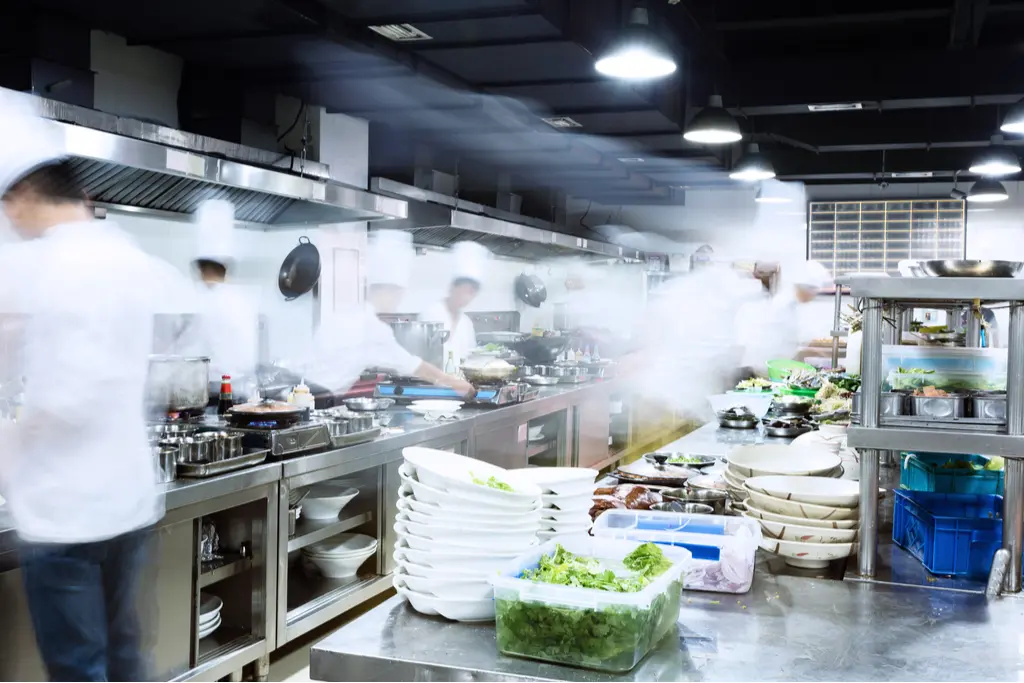
Get a custom quote on electricity for restaurants. Or call us at 844-214-5559. We can help you shop electricity companies in deregulated markets to cut your expenses.
According to the Department of Energy, restaurants use approximately 2.5 times more energy per square foot than most other type of commercial building.
Energy intensive processes in the kitchen, plus the cost of heating and cooling account for the high level of electricity usage in restaurants.
Electricity usage per square foot in restaurants looks like this:
- Fast Food Restaurants use the most electricity per square foot at 73.9 kWh per square foot
- Full Service Restaurants use more space for dining, and average at 43.5 kWh per square foot
- Bar, Pub or Lounges have less energy intensive equipment and average 26.3 kWh per square foot
But no matter what kind of restaurant operation you have, the commercial electricity rate you pay and the amount of kWh used makes a difference in your bottom line.
Understanding the Electricity Bill for a Restaurant
The electricity bill for a restaurant typically will include three sections: Energy Charges (price per kWh), Demand Charges and Delivery Charges. To reduce your electricity bill, you can reduce your usage, reduce your cost per kilowatt hour (in deregulated markets), and reduce your demand.
Energy Charges
This is the price you pay per kilowatt hour (kWh) multiplied by your usage.
If you’re in a deregulated electricity market like Texas, Ohio, New York or Pennsylvania, you can shop for the best electricity rate for your restaurant.
Cut your electricity rate and your usage and you’ll lower your restaurant electricity bill.
Demand Charges
This is the energy charge for the amount of electrical capacity you need.
It’s the maximum amount of kilowatts (kW) used during your highest usage during a 15 minute period within a given month. ($/kW).
Managing your peak demand by staggering start-up on appliances can help lower these charges. Knowing when your utility measures peak demand can help you plan.
Delivery Costs
This covers the transmission and delivery of power to your business. Your local utility company’s delivery rates are approved by your state’s public utilities commission.
Your tariff and delivery fees depend on the type of meter, demand and volume of usage.
Delivery costs for a commercial electricity bill usually show all line items of the utility tariff.
How to Get the Best Electricity Rates for Your Restaurant
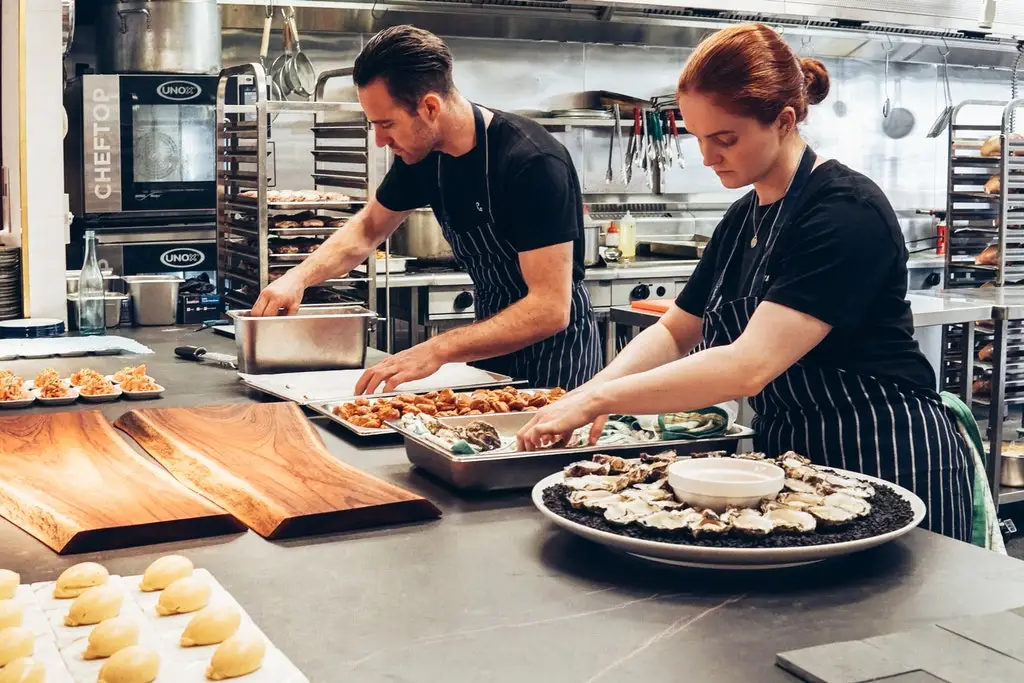
Get a custom quote on electricity for restaurants Or call us at 844-214-5559. We can help you shop electricity rates for your restaurant to keep your bills low.
Your electricity bills and your rate are impacted by a number of factors:
- Regulated vs. Deregulated Markets
- Peak Demand Management
- Total Usage Volume
- Number of meters
- Load Factor
- Location
Shopping for electricity is just part of what you do as a restaurant owner or manager. That’s why working with an energy broker helps you get the best electricity rates for your restaurant.
Our energy advisors are restaurant energy experts that can help with electricity procurement. We can also work with you on budgeting and benchmarking, high meter count portfolio management and energy efficiency review and planning. Your restaurant may also need support for adding and deleting electricity meters, utility rebates and construction services.
In short? Your restaurant’s electricity strategy becomes a lot simpler when you work with an energy advisor that has experience in electricity procurement for restaurants.
Reducing Demand Charges for Restaurant Electricity Bill
In addition to cutting your electricity rate per kWh, your restaurant electricity bill will benefit from better demand management.
Your demand factor (rate) is set annually based on your peak usage during the times when the system is at its peak usage.
Here’s the catch. Those peak usage days aren’t set in advance. Knowing when peak usage days are expected can help you reduce usage on those days. An energy broker can help you identify those peak days.
You can better manage your demand charges if you understand the electrical load for your restaurant. You can calculate load of each appliance based in its KW, which is usually marked on each device.
Then, stagger the start times of your kitchen equipment so you don’t turn it all on in the same 15 minute increment.
Of course, your refrigeration is an always on appliance, but managing your other appliances can help reduce the demand charges on your restaurant electricity bill.
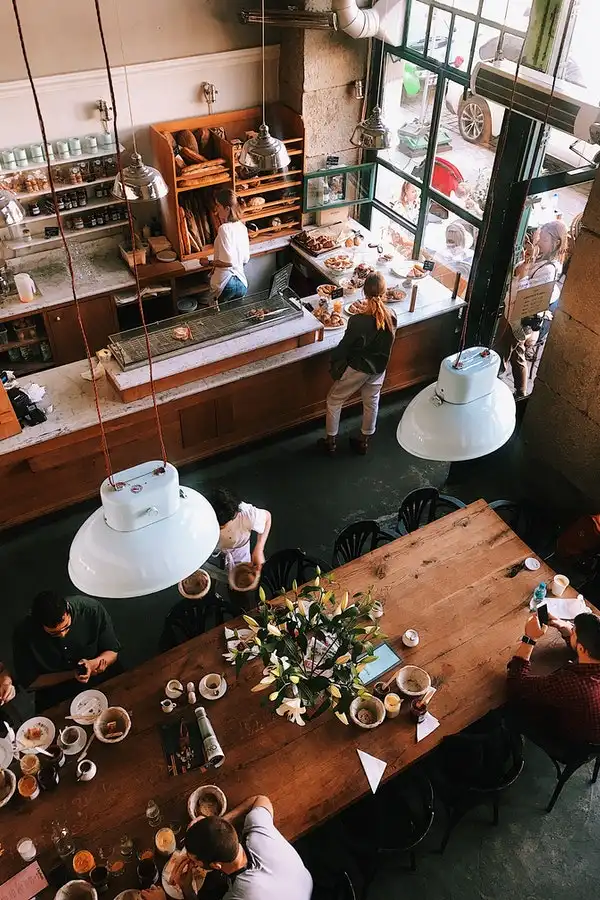
What are the Uses of Electricity in a Restaurant?
So we know that restaurants are some of the most energy intensive commercial buildings. But what are the uses of electricity in your restaurant?
As shown in the chart below, around 45% of energy usage in restaurants goes toward refrigeration. After that is heating, cooling and ventilation at 25% of energy usage, and cooking or meal preparation at 18% of energy usage in restaurants. Lighting and back office make up the rest of the energy usage.
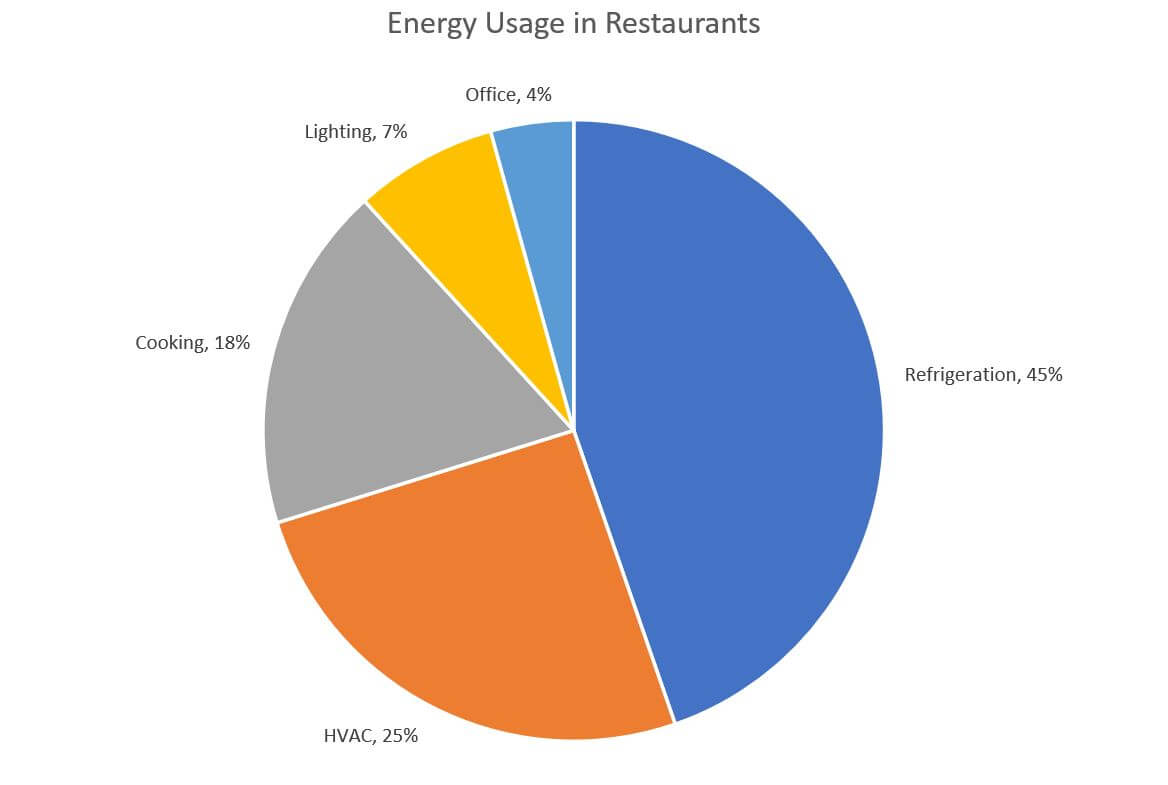
When purchasing or replacing appliances in your commercial kitchen, shop for Energy Star energy efficient commercial food services appliances. There may also be rebates available from your local utility company.
Now that we know the areas of a restaurant that are the most energy intensive, we can address ways to conserve energy in restaurants.
Managing Energy Costs in Restaurants – 7 Ways to Save
If you want a lower electricity bill for your restaurant, you need to get the lowest electricity rate plus lower your total usage.
Get the best electricity rate for your restaurant by working with ElectricityPlans.com. And reduce your usage by focusing on these items:
- Energy Audit. Invest in an energy audit to understand your current consumption and find efficiency opportunities.
- Refrigeration. Refrigeration can account for up to 45% of your energy costs according to the EIA. Check the seal gasket on your walk-in refrigerator and freezer doors to confirm a tight fit. And recalibrate your thermostat and control systems regularly.
- HVAC. HVAC can account for 25% of your restaurant’s energy bill. Get regular HVAC maintenance and control the set point when the building is not occupied. Change your air filter monthly.
- Appliances. Your commercial kitchen appliances should be Energy Star rated for maximum efficiency. You can calculate your kWh usage for each device. Some may surprise you. For example, a single 2-burner coffee maker can use almost 400 kWh a month!
- Lighting. Lighting accounts for around 7% of the electricity usage in a restaurant. Replace discolored lighting fixtures to increase lighting output by up to 10%.
- Layout. Evaluate your kitchen appliance layout. Group hot appliances in one area of the kitchen, away from your refrigerator or freezer.
- Upgrade. Consider upgrading older equipment instead of repairing it. Your utility company may offer rebates for more energy efficient equipment.
Our energy experts have worked with multiple restaurant clients including large quick-serve chains, bars and taverns, test kitchens, foodstuff producers, beer and wine distributors, and more.
Our clients include single-site restaurants plus national chains. Talk to us about your challenges. We’ll help you find solutions.
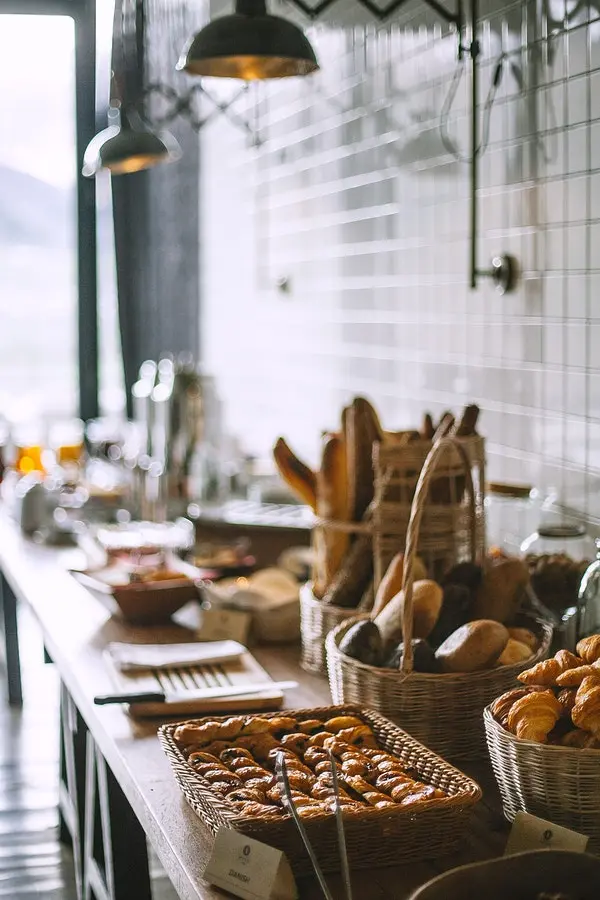
Frequently Asked Questions About Restaurant Management
According to the Department of Energy‘s Commercial Buildings Energy Consumption Survey, the average restaurant in the US is 5,800 square feet, and uses 43.5 kWh per square foot, or 252,300 kWh annually.
The average commercial electricity rate in the US is 12.22 cents per kWh (EIA November 2024).
That makes the average electricity bill for a full service, 5,800 square foot restaurant around $30,831 annually, or $2,569 a month.
Restaurants can reduce their electricity bill through energy efficiency, peak demand management and, in deregulated markets, shopping for electricity rates.
If you are a small business owner, typically the best state to open a restaurant is where you live. But if you are scouting locations for a multi-location chain, Texas is one of the top states for restaurant growth, according to one analysis. Their criteria for best state to open a restaurant includes: disposable income, population growth, and number of restaurants per capita.
Texas electricity is deregulated, which also helps restaurants lower electricity bills. Restaurants in Texas can shop for electricity online. That makes it easy to compare restaurant electricity rates. Restaurants that spend over $2,500 a month on electricity (typically any full service restaurant over 1000 square feet) can get a custom quote.
Additional Resources:
What is a Kilowatt Hour and What Does It Power. Learn how to calculate the total kWh used by your commercial kitchen appliances.
Energy Saving Tips for Small Businesses